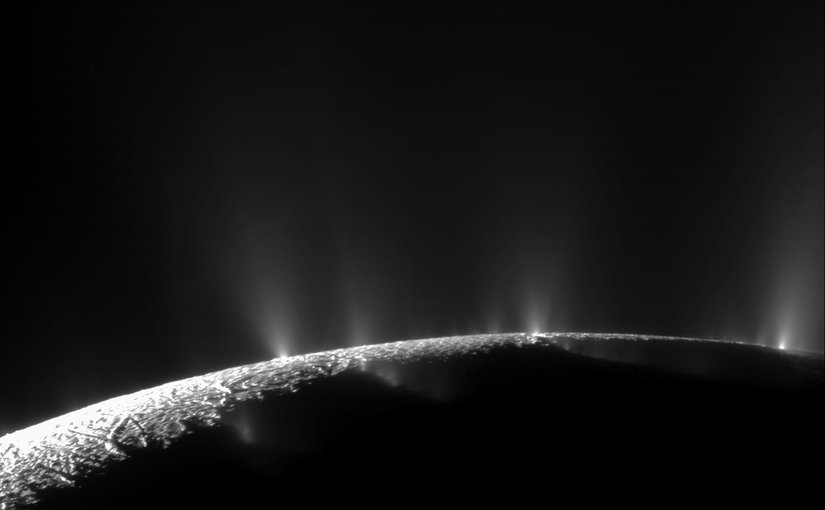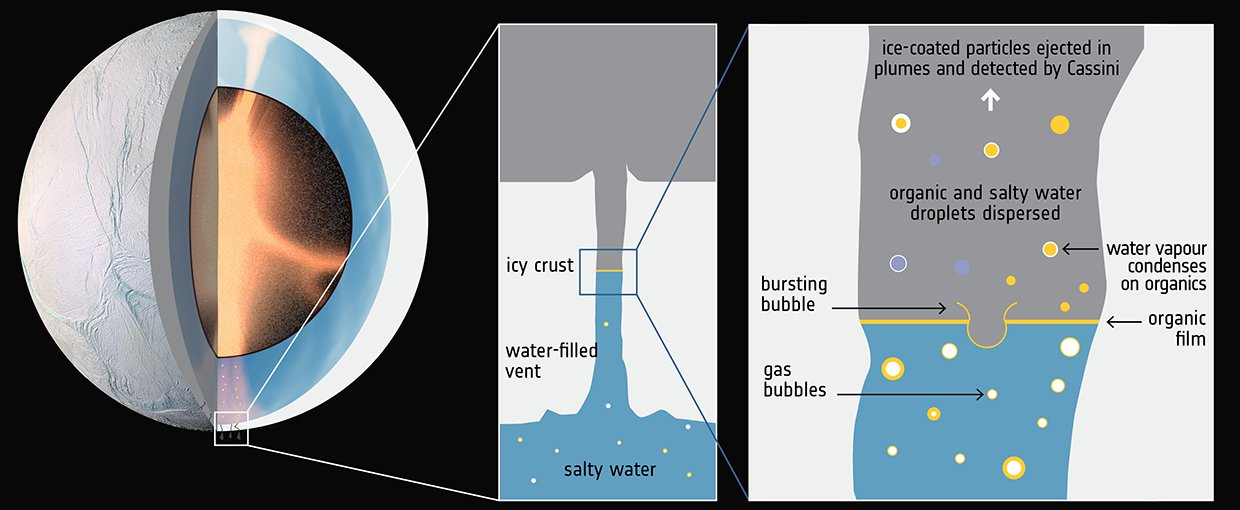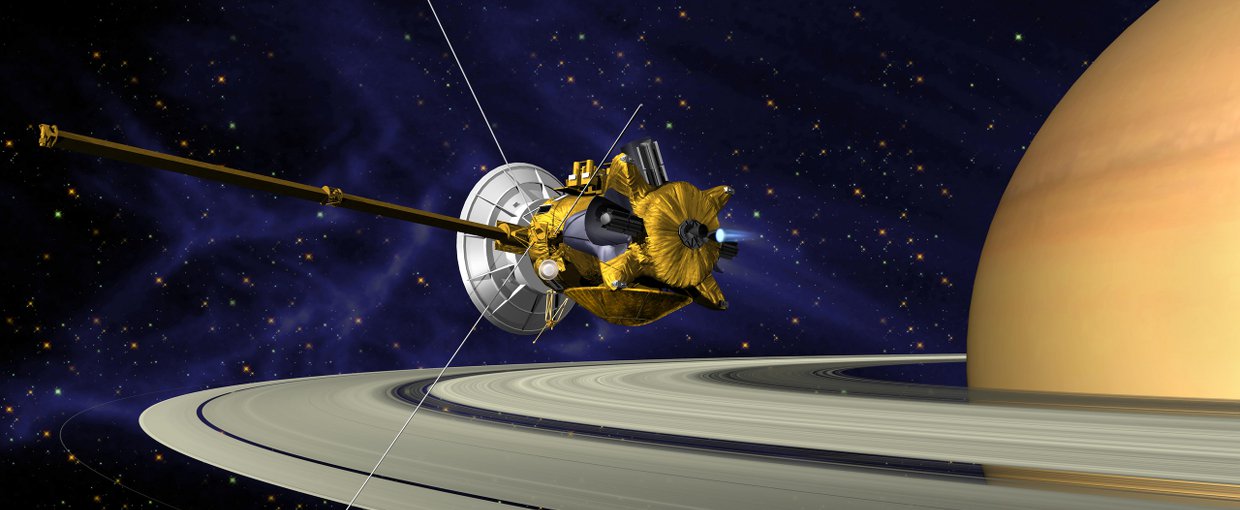
Scientists working with data from NASA’s Cassini spacecraft have published data on complex organic molecules that originate from Saturn’s moon Enceladus. The findings provide new details about the potential habitability of ocean worlds like the tiny, icy moon. The recent results identify much larger and heavier molecules than previous work.
A press release from NASAJPL concerning the findings can be found at:
https://www.jpl.nasa.gov/news/news.php?feature=7174

A dramatic plume sprays water ice and vapor from the south polar region of Saturn's moon Enceladus. Cassini's first hint of this plume came during the spacecraft's first close flyby of the icy moon on February 17, 2005.Image credit: NASA/JPL/Space Science Institute.
The study, “Macromolecular organic compounds from the depths of Enceladus,” was published in June, 2018, in the journal Nature. The work was supported through NASA’s Habitable Worlds Program. The NASA Astrobiology Program provides resources for Habitable Worlds and other Research and Analysis programs within the NASA Science Mission Directorate (SMD) that solicit proposals relevant to astrobiology research.
The Cassini-Huygens Saturn Orbiter and Titan Probe was launched in 1997 and arrived at Saturn in 2004. The Cassini-Huygens mission completed operations on September 15, 2017. The mission provided invaluable data for astrobiologists studying life’s potential on the moons of giant planets. Cassini witnessed icy plumes erupting from Saturn’s small moon Enceladus. When flying through the plumes, the spacecraft found evidence of saltwater and organic chemicals. This raised questions about whether or not habitable environments could exist beneath the surface of Enceladus.
Additional Information:
Organic Compounds from the Depths of Enceladus


